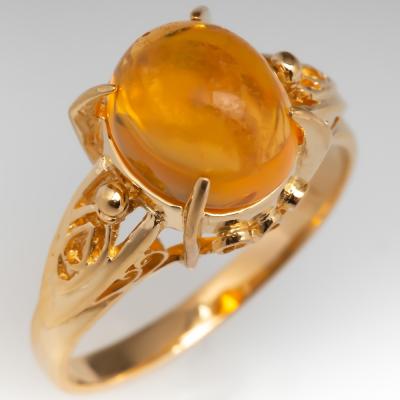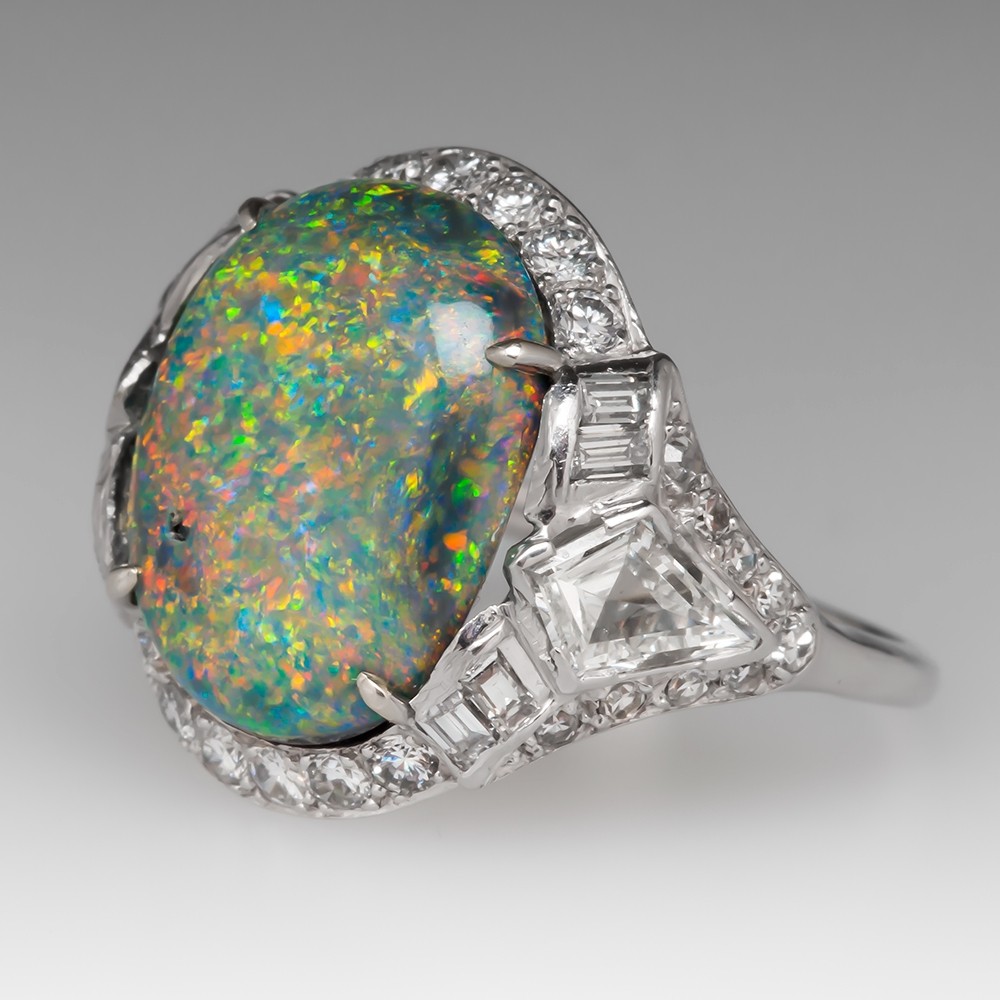
Posted in: Birthstones
 Opal belongs in a mineralogical class of its own. Since it grows without a defined shape and without typical crystalline characteristics, mineralogists consider it a mineraloid. Still, because of its precious gemstone status, experts consider it important enough to include in general mineral databases.
Opal belongs in a mineralogical class of its own. Since it grows without a defined shape and without typical crystalline characteristics, mineralogists consider it a mineraloid. Still, because of its precious gemstone status, experts consider it important enough to include in general mineral databases.
Chemical Composition & Formation of Opal
Chemically, opal is a hydrous silicon dioxide. This speaks not only to its composition, but also to its formation. This gorgeous gemstone forms within the earth's crust, as seasonal rains saturate the ground in desert regions. (source) Heavy rains dissolve the abundant mineral silica, a compound of silicon and oxygen. Constant rains drive this solution down into the ground, depositing it deep within the ancient rocks below. There, it pools on top and seeps into cracks within the ancient bedrock. Then, as the rains dry up and the sun heats up the ground, most of the water evaporates, leaving behind jelly-like layers of silica sediment. (source) Year after year, these layers build up to create opal. Two types of this precious stone form in this way - common and precious. Common opal contains between 2% and 21% water, without play of color. Precious opal typically contains between 6% and 10% water and demonstrate the scintillating play of colors that makes opals so desirable for jewelry. (source)
Types of Gemstone Opal
Black opals are the most popular precious opals available. This is closely followed by white and fire opals. Water opal is another popular type which displays a beautiful play of color against a colorless backdrop. (source) Black opals demonstrate a black, gray, dark blue, or green body color with play of color. White opals exhibit a beautiful play of color against an opaque white background. And fire opals present with a translucent orange or red body color, with or without play of color. A final type, called boulder opal, consists of one of these types of body colors banded together in layers with host rock. (source)
Opal Quality Factors
Color
This gorgeous gemstone is judged on the basis of three standards of quality - color, pattern, and clarity. While uniformity of body color plays a part in determining value, the most important factor is play of color. Play of color refers to the vivid flash of colors that seem to dance across the surface of polished precious opals. Some opals display the full spectrum of colors, while others display only one or two colors. Of course, the most valuable opals feature vivid play of color featuring the full spectrum of colors. (source)Pattern
Additionally, play of color presents in four distinctive patterns, including pinfire/pinpoint, harlequin/mosaic, flame, and peacock. The pinfire pattern features small patches of closely set color. The harlequin pattern exhibits broad, angular patches of color that are also closely set. Flame presents as broad streaks of red across the whole face of the stone. And the peacock pattern consists of primarily blue and green flashes of color. (source)Clarity
The final quality factor for precious opals is clarity. As with other gemstones, clarity refers to the absence of inclusions and the degree of clarity demonstrated by the stone. Opals often exhibit pits, fractures, or inclusions of host matrix. Depending on placement of these inclusions, they can detract from the value of the stone. However, in some ways, clarity is a subjective call. Collectors prefer different levels of transparency, depending on the body color and play of color pattern demonstrated. Whereas water opals should be highly transparent, collectors prefer white and black opals to be opaque. (source) Not surprisingly, the most important aspect of transparency is whether it supports or detracts from the stone's play of color. Experts look for a body color and transparency that optimizes a vivid show of bright colors dancing across the surface. ~Angela Magnotti Andrews4 years ago
1 view(s) 